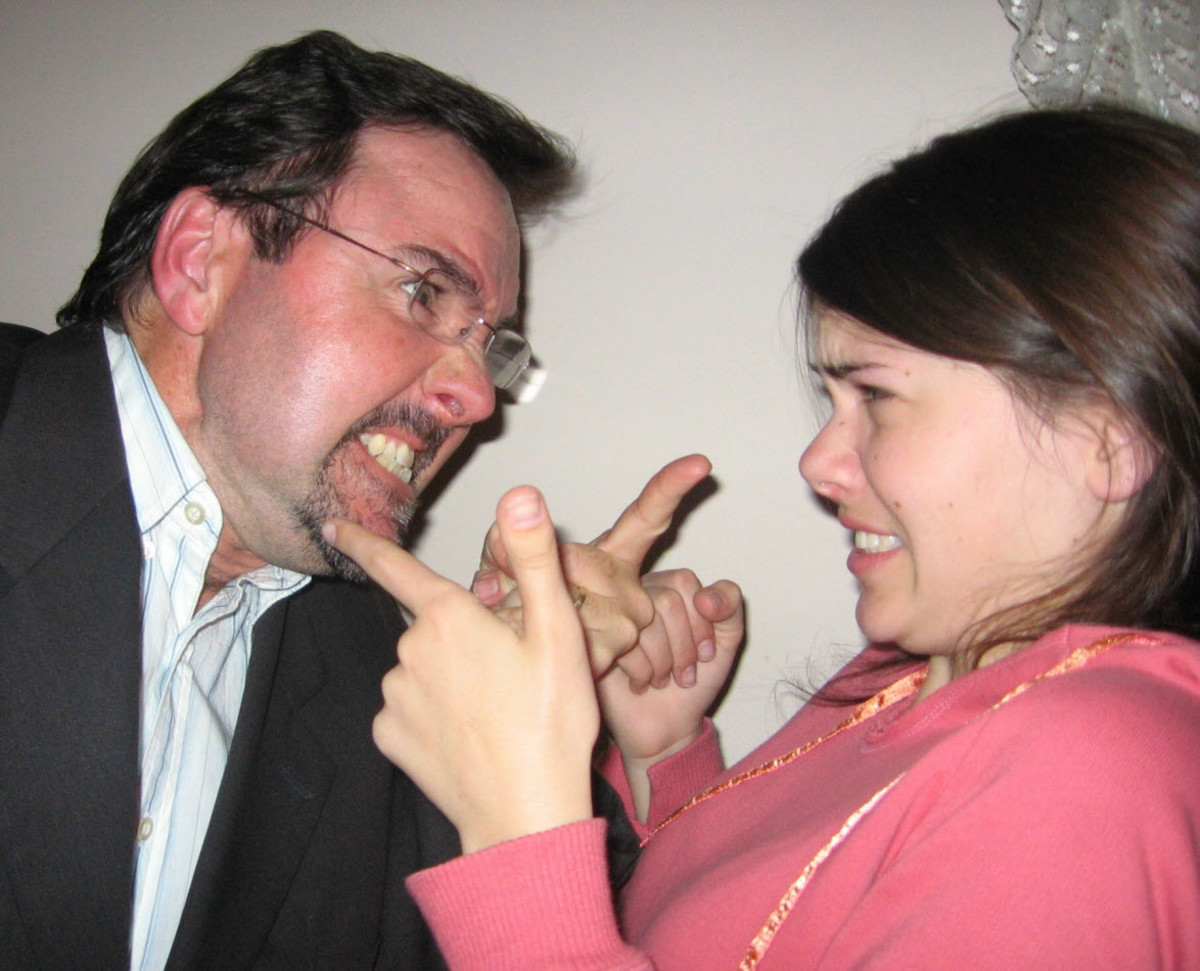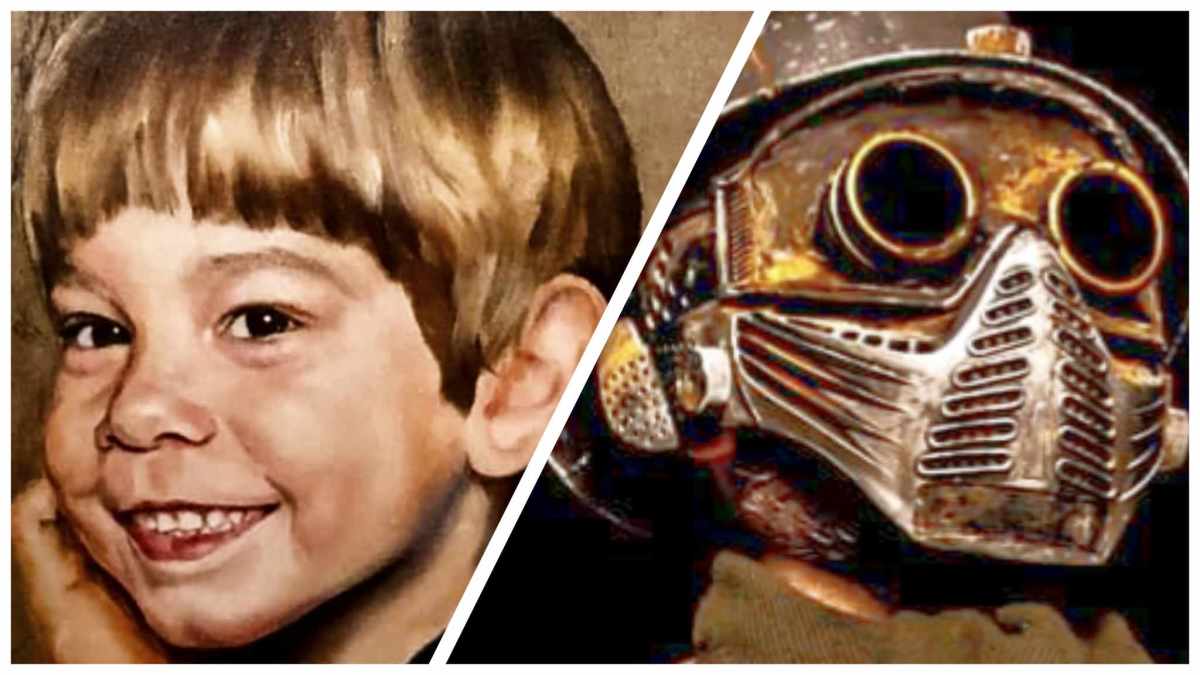The Dangers of Bullying
Introduction
Countless children, teenagers, and adults struggle with bullying each and every day in the home, classroom, the workplace, and beyond. This socialized maltreatment from others can occur in the form of verbalized, written, and physical cruelty, and its long-term effects can scar the victims emotionally, psychologically, and sometimes even physically for the rest of their lives. Bullying makes victims of the bullied, stealing away their dignity and trust and their belief in others. And in the worst case scenarios, sometimes it even steals away their lives. Either when bullying turns to physical violence or when the victim feels their only escape is through suicide or revenge.
In the past bullying was viewed as a traditional and accepted part of growing up, and interacting and interrelating with an individual’s peers. It was considered a hazing for life, a harmless and important educational instrument for the hypothetical real world and its many hard-knocks. An adolescent or an adult that could not cope with this peer abuse was considered immature and emotionally weak; someone that is a wimp and a tattletale. If the victim turned to an instructor for assistance they would receive punishment instead of support for not standing up for themselves. The victim of childhood and teenage bullying discovered it was just easier to conceal and deal with the abuse. If an adult victim of workplace bullying went to their superiors for assistance, they would be told they were not a team player. The victim of adult bullying found it was just simpler to remain silent and maintain employment. On the other hand, the bullies, were perceived as being strong and independent, never crying for help from other colleagues or their superiors. Today, even with bullying laws and regulations in place throughout the United States and the world, unfortunately, bullying is still seen as just a part of life; the natural order of being a member of the human race. The theory here is some of us will be bullies and some of us will be bullied.
Defining Bullying
Bullying has been around as long as the human race has existed, and it does not stop after childhood or even young adulthood. Wherever there is a perception of power versus powerlessness, status quo versus different, or victimizer versus victim, someone will be the target of a bully. “Bullying includes behaviors that focus on making someone else feel inadequate, or focus on belittling someone else. Bullying includes harassment, physical harm, repeatedly demeaning speech and efforts to ostracize another person. Bullying is active, and is done with the intention of bringing another person down” (Teenage Bullying). Bullying is classified in two major categories. Indirect bullying, which uses verbalized and written communications to humiliate and intimidate, and direct bullying, which uses vocalized threat, physical force, and bodily harm to degrade, control, and terrorize. Bullying can occur anywhere but it is especially problematic in elementary school, middle school, and high schools or at the workplace. A bullying survey in 2011, at Klamath Community College in Klamath Falls, Oregon showed that bullying affects children, teenagers, and adults, male or female, gay or straight equally. It does not matter your societal status, religious affiliation or your ethnic or racial background. Anybody can be a victim and anyone can be the victimizer. Bullying is a form of violence that is an aggressive behavior involving the imbalance of power between the one being bullied (the victim) and the bully (the perpetrator). Bullying should never be ignored or condoned; it is not a natural way of interrelating with others. “It can define a person as an adult. It can cause people to kill themselves over it or kill others” (anonymous person for Klamath Community College survey).
Indirect Bullying:
Indirect bullying comes in the form of articulated or written communications. It is the use of derogatory name calling and aggressive taunting that goes beyond the average to degrade and emotionally annihilate an individual. Racist, sexist, homophobic, and other offensive terminology is utilized to humiliate and ostracize the victim of these verbal and written confrontations. The indirect bully uses this derogatory name calling and hostile taunting to isolate and to dominate his or her victim into a type of non-physical submission; control without actual physical interaction. Indirect bullying can also come in the forms of sexual harassment and spreading rumors and allegations about and against the targeted victim, to recruit additional people into the bullying act. This constructs a circle of hatred and segregation around their target; to generate an even more antagonistic environment for the victim. Indirect bullies may blackmail their victims for money or other favors, making their victim their benefactor. An indirect bully might even at some point of the bullying progression threaten the life of their victim; at this point it begins to be direct bullying. Indirect bullying can affect a victim emotionally and psychologically, altering the way they interconnect with others and how they perceive themselves. Indirect bullying is harder to prove and prevent than physical bullying because there are no physical indications it ever occurred without a cooperative witness. Written communications can be thrown away or deleted and verbal communication may or may not be overheard by a third party. Most victims deal with this type of abuse in silence because they feel no one will believe what is happening or they do not want to be humiliated even more by repeating what the bully or bullies have said about them. “Being bullied ruins the lives of victims short-term and long-term. Words can kill”( anonymous person for Klamath Community College survey).
Direct Bullying:
Direct bullying is the combination of vocalized threat and physical dominance on another person causing them anxiety, physical discomfort, injury, and possible death. This method of bullying is “in your face” violence that is all about power and creating shock and awe. Direct bullying is part psychological and emotional intimidation and part physical threat and assault. The direct bully wants to physically and psychologically control their victim; they want to cause the victim to be terrified of the next attack. The direct bully may start out with threatening communications towards their victim and then escalate to physical control and violence. This physical violence comes in the forms of punching, slapping, and kicking. In the extreme form of this type of physical assault a weapon may be used to cause bodily harm to the victim. Sexual assault also can be used to destroy and control the target of the bullying. They may steal the victim’s possessions or destroy them to demonstration to the victim that they are in complete control. The bully may be the one perpetrating the harassment and physical harm or they may have others do it for them. Direct bullying can become dangerous because it could escalate into the victim or bully getting injured or killed.
Types of Bullying
Child and teenage bullying effects millions of youth every day worldwide. School bullying can be found throughout elementary school, middle school, and high school in the United States. Statistics show that Gruber (2010) states:“…each day 160,000 students miss school for fear of being bullied… {and}… 100,000 students carry a gun to school” (The Bullying Needs to Stop. Now). The victimization can take the form of either indirect bullying or direct bullying, and can become dangerous for both the victim and the victimizer. School bullying can be pack bullying, in which a group harasses the victim, or one-on-one individual bullying. Racial, ethnic, religious, sexual orientation, gender identity, or socio-economical differences create the atmosphere the causes the majority of bullying in schools, but in some cases the reasons are unclear why it happens. The victims are usually perceived as being weaker, different, and somehow an outsider. The bully will be more dominate, popular, and part of the perceived “in crowd”. Socialization problems or having a disability can set the victim apart from their fellow students; this can make them more susceptible to being a target. Teachers and parents may or may not be aware of the seriousness of school bullying, considering it as just a normal part of growing up. The victim is sometimes even blamed for the bullying, when adults condone the behavior. “In Klamath County the T.A.P Survey showed that 7.7 percent of adolescents in middle school and high school were absent because they felt unsafe at their schools” (Klamath County study).
Even when people become adults they can be tormented by a bully, especially at their place of employment. “Workplace Bullying is repeated, health-harming mistreatment of one or more persons (the targets) by one or more perpetrators…” (Definition of WorkplaceBullying). Just like in a school setting prejudice, personality differences, relationship conflicts, jealousy, and revenge play out in the form of bullying in the workplace. Unlike school bullying those targeted at the workplace are usually not the loners or suffering from low self-esteem. Sometimes the victim may be new or have a disability that sets them apart from the other employees. A victim of a workplace bully is usually seen as a threat to the bully or bullies and their environment. The victim can be targeted because they are achieving more at the workplace than the bully. The harassment comes in the form of verbal and nonverbal abuse and interference in the victim’s work. The bully may use sabotage to prevent their target from getting projects done, creating an environment of hostility from other coworkers who believe that the victim is not doing their job. The victim may deal with the abuse, complain to their superiors, quit the job or in many cases, get fired for being the troublemaker. “According to the Workplace Bullying Institute, up to a third of workers may be the victims of workplace bullying. About twenty percent of workplace bullying crosses the line into harassment” (Workplace Bullying).
In 2010 Tyler Clementi, age eighteen, jumped to his death off a bridge, because two fellow university students made him believe that they were going to post a video online of him and another male student having sex in his dorm room. Today’s technology has furnished the modern bully other instruments that are available twenty-four hours a day, seven days a week, to locate and harass their victims. The tools are the Internet, World Wide Web, Blackberries, cellphones and other devices; this type of victimization is called cyber-bullying. Victims of cyber-bullying may know or be acquainted with the bully or the bully may be a complete stranger they have never meant before. The use of social networks including, Facebook and MySpace have given a multimedia playground for a contemporary type of bullying. The combination of degrading and threatening messages, rumor spreading, and uploading humiliating pictures and videos, creates a hostile environment for the victim. The victim’s password information can be hacked into, enabling the bullying to hurt others through the victim’s network site and to place even more humiliating and degrading messages, pictures, and videos on the victim’s account. This can affect the victims of cyber-bullying both in the online world and the physical world. And once these messages and pictures have been uploaded to the World Wide Web, millions can see them and they cannot just be simply erased. Texting and emailing also furnishes a modern bully a conduit to torment and demene their victim. One text message or one email can be communicated to a thousand people in just a few seconds, generating a lightning fast rumor mill that cannot be controlled or immobilized. A bully can also hack into the victim’s email and text accounts, sending others hate filled messages, making it look like the victim is the one sending these communications. This can create complications for the victim, both socially and legally. “Over half of adolescents and teens have been bullied online, and about the same number have engaged in cyber bullying… Fewer than 1 in 5 cyber bullying incidents are reported to law enforcement” (Cyber Bullying Statistics),
The Bullied
Anyone can be a victim of bullying; bullying is an equal opportunity sport. “A person is bullied when he or she is exposed, repeatedly and over time, to negative actions on the part of one or more other persons, and he or she has difficulty defending himself or herself” (Recognizing Bullying), Those at risk of being bullied characteristically do not correspond to some type of standard that their contemporaries pursue. A person that does not fit into this standard or norm must be somehow excommunicated and often intimidated to reinforce, vindicate, and safeguard this mythological representation of normal. Bullying is executed to either instruct the victim in a message that demonstrates the standard behavior desired, so the victim can conform, or to illustrate to the victim that they will never be capable of conforming to the caricature of the standard behavior wanted.
The victim can be perceived as not being friendly enough or is not a team player because they have different interests or do not have time enough to interact with their peers. A victim might be identified as a nerd or a geek if they take school or work too seriously or if they achieve too much. A victim can be in a different socio-economic group than the bully, making them somehow on a lower social level at school or the workplace than their wealthier peers. A victim may be selected by the bully because they just dislike them or have the impression that they have somehow disrespected them. This strange conflict might never be truly comprehended by the victim or the bully. A bullying victim could be new to the school or workplace, and deemed as an outsider or a threat to the existing click. In South Hadley, Massachusetts Phoebe Prince, age fifteen from Ireland, committed suicide in 2010. She was bullied for being new to the country and the local high school and various other reasons; her case became criminal when the bullies were charged with statutory rape and civil rights violations. Victims of bullying can also be overweight, be a jock or even have red hair. Anything can make a victim of bullying different and a target of those that want to control their environment.
Those with intellectual, psychological or physical disability that cause them to appear or act differently than their peers can be targeted for bullying. The victim might not be capable to participate in school or workplace activities like their contemporaries because of these health problems and disabilities. They may require specialized equipment, educational assistance or other tools to totally participate in school or work. Teachers, superiors, fellow students or coworkers may believe that the person with the disability is getting some kind of special treatment. Someone that is disfigured from a birth defect, injury or other health problems can also be a target of bullying because the bully sees in them a difference that makes them feel uncomfortable. A bully may have never been around someone with a disability, health problem, or disfigurement that affected them physically, mentally or cosmetically. They may have been raised in a family that taunted those with disabilities and deformities.
A bullying victim can be a member of a different religion, ethnic, or racial group. The victim is viewed by the bully as peculiar and even foreign. The victim’s distinctive customs, rituals, religious beliefs, ceremonies, diet, dress or other differences is seen by the bully as farther proof of their alien differences. A victim’s skin color and language may also make them a target of a bully. The victimizer may have some kind of racial prejudice or hatred towards immigrants. These prejudices can come from the bully’s upbringing, political and religious beliefs, or personal dislikes.
Someone with a different sexual orientation, gender identity, or someone that does not fit the sexual characteristics of their gender can be the target of homophobic bully. These perceived differences are seen as a threat to the norm. If a male is a homosexual, bisexual, or identifies as a female, they are seen as weak and not fulfilling the male role in society. This role is to be strong physically and masculine. If a female is a homosexual, bisexual or identifies as a male, they are seen as trying to be too strong or not fulfilling the female role in society. This role is to be physically weak and feminine. If a male or female does not fit these stereotypes of gender, it creates a conflict between them and their peer group. Members of the lesbian, gay, bisexual, and transgender community and those that are perceived to be members are at risk of indirect bullying and direct bullying in both the workplace and school setting. In Springfield, Massachusetts Carl Joseph Walker-Hoover, age eleven, hung himself in 2009, because of homophobic bully. He was targeted just because he was perceived as homosexual. In Tehachapi, California 2010 Seth Walsh, age thirteen, an opening gay teenager, tried to commit suicide by hanging himself and a week later died from his injuries. He was targeted because he was a homosexual. Both these tragedies show the dangers of bigotry and bullying. According to the 2009 National School Climate Survey:
- “84.6% of LGBT students reported being verbally harassed, 40.1% reported being physically harassed and 18.8% reported being physically assaulted at school in the past year because of their sexual orientation.
- 63.7% of LGBT students reported being verbally harassed, 27.2% reported being physically harassed and 12.5% reported being physically assaulted at school in the past year because of their gender expression.
- 72.4% heard homophobic remarks, such as "faggot" or "dyke," frequently or often at school.
- Nearly two-thirds (61.1%) of students reported that they felt unsafe in school because of their sexual orientation, and more than a third (39.9%) felt unsafe because of their gender expression.
- 29.1% of LGBT students missed a class at least once and 30.0% missed at least one day of school in the past month because of safety concerns, compared to only 8.0% and 6.7%, respectively, of a national sample of secondary school students.
- The reported grade point average of students who were more frequently harassed because of their sexual orientation or gender expression was almost half a grade lower than for students who were less often harassed (2.7 vs. 3.1).
- Increased levels of victimization were related to increased levels of depression and anxiety and decreased levels of self-esteem.
- Being out in school had positive and negative repercussions for LGBT students 96% outness was related to higher levels of victimization, but also higher levels of psychological well-being”
Bullying against the lesbian, gay, bisexual, and trans-gender community can become so severe that it hazes the lines between bullying and a hate crime.
The Bully
Those who become bullies originate from all walks of life and age groups. A bully might not have any reason or a thousand reasons that can be explained for bullying or selecting their particular victim. These motives can be shaped from what their family, religion or peers have taught them; or what their family, religion or peers have not taught them. The target of a bully may be a member of a group they have a prejudice against or someone they personally do not like. A bully might have underlying emotional, mental, and psychological disorders that have been under-diagnosed, undiagnosed or ignored. The bully may have suffered emotional, psychological, physical or sexual abuse at some period in their lives. The abuse may have come from the bully’s family, peers, or even strangers or the bully may have witnessed this abuse. Being a bully allows the individual that suffered or witnessed the abuse to be in control and take out their aggression on another person weaker than themselves, replaying the abuse they have suffered or witnessed through a type of revenge or reenactment.
A person who intimidates others through bullying is someone that needs to be in control of their environment through the use of aggression at home, school, or the workplace. A perpetrator of bullying wants to create an imbalance of power by psychological, emotional, and physical force. This antagonistic behavior can take the form of indirect bullying or direct bullying of their intended target. A bully usually likes to test limits with their social interactions with their peers and superiors. Testing the limits tells them how far the bullying can be taken and if they can recruit others in the bullying activities. Testing these limits also becomes a challenge to the perpetrator, almost like a sporting event, points are celebrated. They will also be good at manipulation when recruiting others in their bullying activities, using another person's dislikes, prejudices, or inadequacies. These perpetrators have many similarities to cult leaders when it comes to their followers. The use of reward and punishment creates both an emotional and psychological control of those that want to be a part of the bullying pack.
In many cases a bully is usually rewarded somehow for their behavior; this reward can come from their peers, parents, religious leaders, teachers or superiors. The reward may only happen once or many times. In many cases bullying is a generational condition, in where bullying is seen as a normal way of interacting with those you do not like or those who are different then you. Someone raised in a racist environment will usually target someone of another race or ethnic group. Another person raised in a home that has a deep religious belief that homosexuality is a sin, may target those in the gay, lesbian, bisexual, and transgender community. “Although some students who bully are less likely to be trusted and may be seen as mean and manipulative, a bully who learns aggression toward others garners power and may find the behavior a difficult habit to break. Some acts of bullying results in suspension or expulsion of students and translates into child abuse and domestic violence in adulthood. Research shows that 60 percent of males who bully in grades six through nine are convicted of at least one crime as adults, compared with 23 percent of males who did not bully” (California Department of Education).
Signs and Side Effects of Bullying
The signs and symptoms of bullying can be barely noticeable or extremely obvious. These signs and symptoms depend on the form of bullying and the individual that is being bullied. Physical signs of bullying are ordinarily very visible, unless the victim conceals the evidence because of embarrassment and fear. These physical signs include unexplainable injuries like wounds, contusions, and even broken bones that did not come from school activities, occupational responsibilities, athletics, or other basic daily duties and hobbies. Damaged, lost or missing items of clothing and other belongings that have no explanation can be an indication of bullying. Emotional and psychological symptoms and indicators of bullying can be challenging to detect and easier for the victim to hide or explain away. These indicators include inadequate grades in school or unsatisfactory work performance. The victim loses interest in school or their work and will make excuses to avoid going there; this is partly from fear and partly from frustration. Even though the victim may have been once an excellent student or employee; the effects of being bullied can create an environment where the victim is expelled or fired do to absenteeism. This can create more psychological and emotional stress on the victim whose educational and financial future is at stake. The victims can lose interest in activities with friends and family, withdrawing from human interaction completely. They may even lose interest in their hobbies and pastimes, pulling deeper into an emotional crisis. This emotional crisis can become a danger for the victim or the bully, causing low self-esteem and depression, and for some suicide or revenge on those who bullied them.
The dangerous side effects of bullying come from the perpetrator’s unrelenting cruelty and rage. But the victim can also become a danger to themselves and others, when the daily abuse becomes unbearable to live with. The victim can turn into the bully, taking their vengeance out on someone younger or weaker than themselves, creating a circle of abuse. The victim may take out there revenge on the bully themselves, this can endanger both the victim and perpetrator, and in some cases innocent bystanders. Examples of this is Columbine and other school shootings, where the perceived outsiders want to get retribution on those who have tormented them. Suicide of the victim or even the perpetrator can also be the final end to the torment. The victim loses all hope that the bullying will stop, losing faith in others that have not helped them. The emotional and psychological pain becomes just too much. In the past few years there have been many cases in the news of children, teenagers, and young adults being bullied to death. Victims like Carl Joseph Walker-Hoover, Seth Walsh, Phoebe Prince, and Tyler Clementi, have been the fatalities of uncontrolled bullying. In rare cases the bully may also choose suicide, in these cases the bully was usually abused at home or was being bullied themselves.
Short-term health effects can include more frequent headaches, gastrointestinal problems, tremors, breathing disorders, and dizziness that have no other health explanations. Long-term effects of bullying can cause victims to suffer from psychological, emotional, and physical health problems, caused by the repeated daily stress and anxiety. Depression, panic attacks, and post-traumatic stress disorder (PTSD), is common in victims of bullying. There is proof that stress and repeated anxiety can change the brains chemical makeup and even cause permanent brain damage including hippocampus shrinkage. This condition can cause memory loss and other cognitive disorders. The victim may suffer from other long-term and progressing health problems associated with stress including immunological deterioration, cardiovascular complications, chronic fatigue syndrome, fibromyalgia, skin conditions, and various other illness and diseases. “Stress is a biological human response. It is physiological and real, not just imagined. Low-level stress may be necessary to compel people to act. However, severe stress, which prevents rational, controlled action, has overwhelming negative consequences” (www.bullyingstatistics.org). Bullying makes a warzone for the victim, whether it is a school playground or the office. It also affects the family and friends of the victim, either through watching them suffer from the torment and the health and mental conditions it causes, or losing them forever to suicide or homicide. Sirdeaner L. Walker states: “…her son’s 11-year-old tormentors were worse than the breast cancer she had survived four years ago” (When Words Can Kill: That’s So Gay by Susan Donaldson James).
Preventing Bullying
School bullying prevention can be done through programs that teach children how to deal with anger and prejudices problems. Proven programs like Positive Behavioral Interventions and Support (PBIS) and the Hands and Words Are Not For Hurting Project, show that if caught early children and teenagers will respond to these programs. P.B.I.S uses a three tiered system that includes primary intervention that is school wide, secondary intervention that is set in the classroom, and tertiary intervention which focuses on the individual. Each part of the system teaches students positive behavior and its rewards. The program also teaches students how to respect others and how to deal with daily stressors. The organization Hands and Words Are Not For Hurting Project was founded in 1997 by Dr. Bob Kelly and his wife Ann Kelly in Salem, Oregon. Bob, an emergency room doctor and Ann, a women’s self-defense instructor, had seen too much violence and wanted to do something about it. Their mission statement is: “To educate each person in every community about their moral and legal right to live free of abuse and violence.” Their goal is to: “End abuse and Violence in our homes, schools, and communities around the world” (Hands and Words Are Not For Hurting Project). Both these programs have helped schools around the country. Workplace bullying prevention is more difficult to control and monitor. Sensitivity training and other programs that teach respect and anger management can help change the working environment.
Federal and state regulations for the disabled and other civil rights laws need to be reinforced in schools and the workplace. State laws on bullying are needed in all fifty states. These laws should be followed not ignored. Local governments and community leaders can participate in national and local organizations to prevent bullying and other violence in schools, the workplace, the home, and the community. In the Klamath Basin there are so many resources that are not being utilized. One anonymous person wrote: “Start an anti-bullying campaign with large employers like Sky Lakes, JELD-WEN, NEW, Klamath County government, city schools and county schools, Running Y, and Etc... and community leaders to end bullying in Klamath County” (anonymous person for Klamath Community College survey). This advice would work in other communities as well. To get local businesses and government involved in stopping bullying in the school systems and also at the college and university levels and at the workplace.
Conclusion
Bullying is a violent behavior that is hard to prevent. A bully is influenced by many factors that come from their family, religion, politics, peers, abuse, and mental illnesses and personality disorders. These factors are either learned or are a side effect of abuse or mental problems. If a child comes from a home that teaches intolerance and hate, and this is reinforced by their religious leaders and peers. This child will target those groups that they have been taught to hate. If a child comes from a home of excepted abuse, where there is daily emotional, psychological, and physical pain. This child will repeat the abuse on another, causing them the same pain they are in. In the survey at Klamath Community College, the majority of participates both male and female, ages eighteen to fifty-eight, agreed that these influences create a breeding ground for bullying.
To change these attitudes we must first change people’s views on violence and prejudices. We also need to reteach ourselves as human beings compassion and empathy for others. This all starts in our own homes, places of faith, and our public institutions. Laws against bullying are very important but if we do not reinforce them or really believe in them, they are useless.
Sherrie D. Larch








